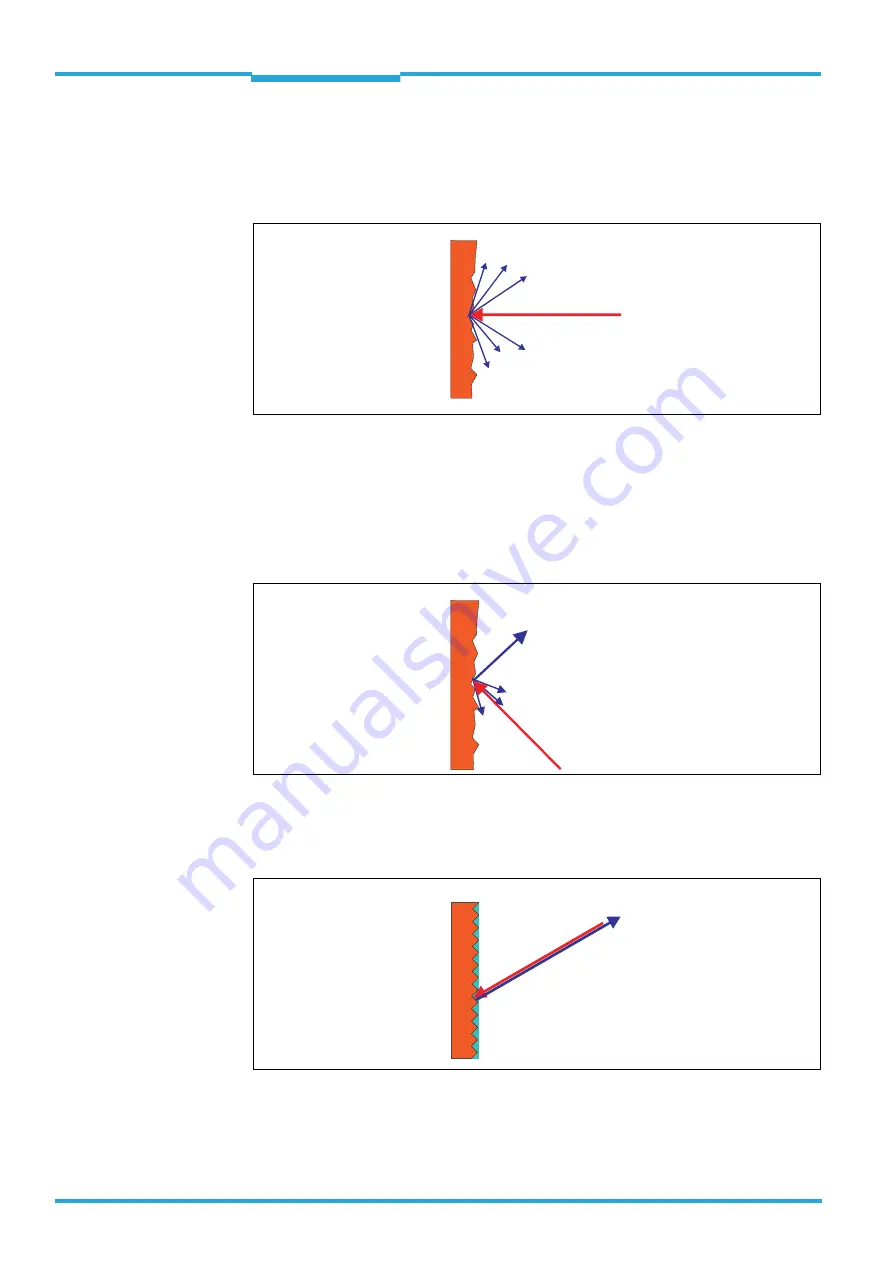
Chapter
3
Operating Instructions
Laser measurement sensor LD-MRS
34
©
SICK AG · Germany · All rights reserved · Subject to change without notice
8012948/ZMQ0/2017-06-09
Product description
3.4.9
Impact of the object surface on the measurement
The signal received from a perfectly diffuse reflecting white surface corresponds to the defi-
nition of a remission of 100 %. As a result of this definition, the remissions for surfaces that
reflect the light bundled (mirrored surfaces, reflectors), are more than 100 %.
Most surfaces reflect the laser beam diffusely in all directions.
The reflection of the laser beam will vary as a function of the surface structure and colour.
Light surfaces reflect the laser beam better than dark surfaces and can be detected by the
LD-MRS over larger distances. Brilliant white plaster reflects approx. 100% of the incident
light, black foam rubber approx. 2.4 %. On very rough surfaces, part of the energy is lost due
to shading. This reduces the scanning range of the LD-MRS.
The reflection angle is the same as the angle of incidence. If the laser beam is incident per-
pendicularly on a surface, the energy is optimally reflected, see
. If the beam is in-
cident at an angle, a corresponding energy and scanning range loss is incurred.
If the reflected energy returned is over 100% (basis: Kodak standard) the incident beam is
not reflected diffusely in all directions, but is reflected in a specific direction. As a result a
Fig. 3-16:
Reflection of the laser beam at the surface of an object
Fig. 3-17:
Reflection angle
Fig. 3-18:
Degree of reflection
















































